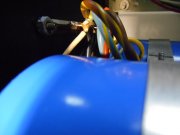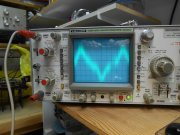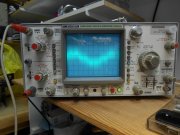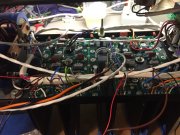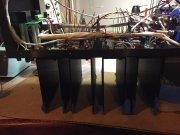grapplesaw
Veteran and General Yakker
The hum/buzz in not significantly better but this will be my reference for future measurements. Scope is set to max sensitivity ( 0.5 mV / div ) on the amplifier output with an 8 ohm speaker connected. Only the scope was grounded. Input of PL14_20 has a 10 k resistor only, connected to pin 1 & 2, no other wiring.
I may be on to something! ( or another goose chase ) but the AC wiring across the top of the amp; when moved closer to the control board, the hum portion of the noise increased. I believe I have routed these wires correctly but maybe they should be twisted? --or magnetically shielded? This seems to me to be a terrible design fault to have the AC line wires so close to the most sensitive components. I believe I have read that the thermal switches have been converted to DC by some. Is this part of the "Watts Abundant" DC Protection board?
Have you addressed twisting the AC wires yet?

